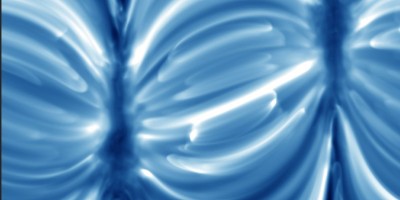The question of the possibility of life beyond Earth, as framed by the Drake equation, can be quantified to show that habitable environments for life as we know it are commonplace in the Galaxy.


References
Shapley, H. Of Stars and Men (Beacon, 1958).
Cocconi, G. & Morrison, P. Nature 184, 844–846 (1959).
Frank, A. & Sullivan, W. T. III Astrobiology 16, 359–362 (2016).
Drake, F. Phys. Today 14, 40–46 (1961).
Baross, J. A. et al. The Limits of Organic Life in Planetary Systems (National Academies Press, 2007).
Winn, J. N. & Fabrycky, D. C. Annu. Rev. Astron. Astrophys. 53, 409–447 (2015).
Schulze-Makuch, D. & Irwin, L. N. Astrobiology 4, 11–18 (2004).
Greaves, J. S. et al. Nat. Astron. 5, 655–664 (2021).
Hallsworth, J. E. et al. Nat. Astron. 5, 665–675 (2021).
Michalski, J. et al. Nat. Geosci. 11, 21–26 (2018).
Abramov, O. & Mojzsis, S. J. Earth Planet. Sci. Lett. 442, 108–120 (2016).
Nathues, A. et al. Nat. Astron. 4, 794–801 (2020).
Castillo-Rogez, J. C. & McCord, T. B. Icarus 205, 443–459 (2010).
Hussmann, H., Sohl, F. & Spohn, T. Icarus 185, 258–273 (2006).
Sotin, S. & Tobie, G. C. R. Physique 5, 769–780 (2004).
Choblet, G. et al. Nat. Astron. 1, 841–847 (2017).
Schwamb, M. E., Brown, M. E., Rabinowitz, D. L. & Ragozzine, D. Astrophys. J. 720, 1691–1707 (2010).
Levison, H. F., Duncan, M. J., Brasser, R. & Kaufmann, D. E. Science 329, 187–190 (2010).
Stevenson, D. J. Nature 400, 32–33 (1999).
Acknowledgements
These ideas benefited from discussions with E. A. Frank (First Mode), O. Abramov (Planetary Science Institute), R. Brasser (Origins Research Institute, Budapest) and S. C. Werner (Univ. Oslo). I thank M. E. Brown (Caltech) for his elaboration of Sedna-like TNO populations. N. H. Sleep (Stanford) provided valuable perspective.
Author information
Authors and Affiliations
Corresponding author
Ethics declarations
Competing interests
The author declares no competing interests.
Additional information
Peer review information Nature Astronomy thanks Norman Sleep for their contribution to the peer review of this work.
Rights and permissions
About this article
Cite this article
Mojzsis, S.J. Habitable potentials. Nat Astron 5, 1083–1085 (2021). https://doi.org/10.1038/s41550-021-01529-3
Published:
Issue Date:
DOI: https://doi.org/10.1038/s41550-021-01529-3
- Springer Nature Limited


